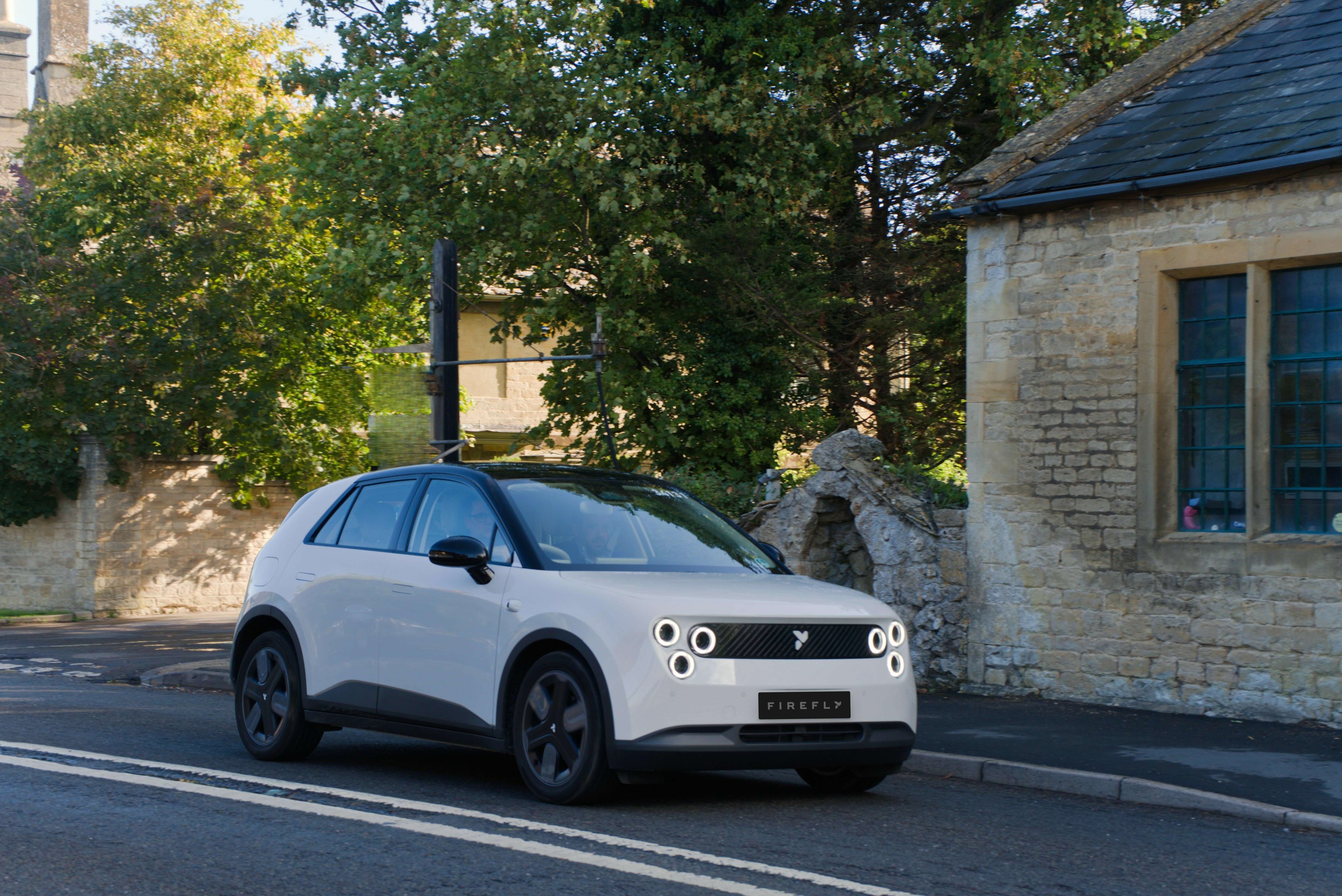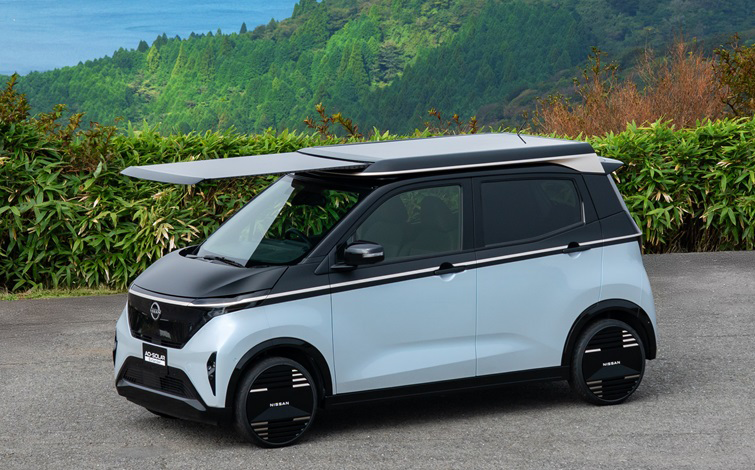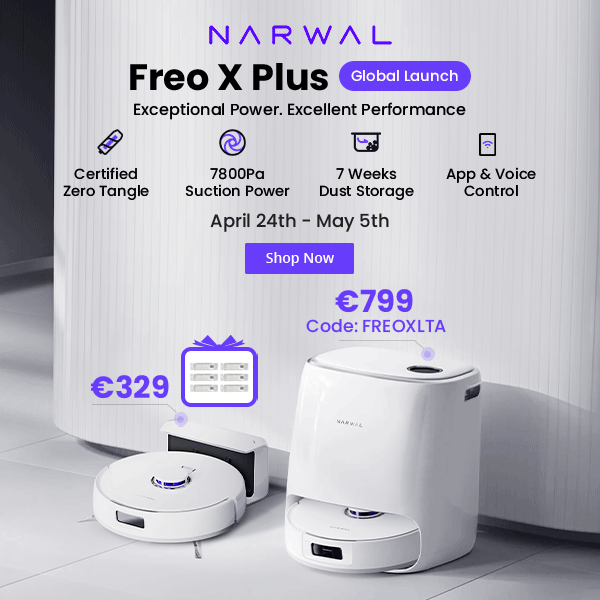
The Wuling Bingo was launched on March 29 in China with a starting price of 59.800 yuan (7.887 euros) and had 522 units delivered in March and 16.383 units in April.
This impressive small electric car is a direct alternative to the BYD Seagull.
Let’s see some details.
Length × width × height: 3.950×1.708×1.580 mm Wheelbase: 2.560 mm Curb weight: 990 kg (lightest version) and 1.125 kg (heaviest version) Tire specifications: 185/60 R15 Seats: 4 Drive motor type: AC permanent magnet synchronous motor Drive motor maximum power: 30 kW (low level version) or 50 kW (high level version) Maximum torque of drive motor: 110 Nm (low level version) or 150 N.m (high level version) Top speed: 100 km/h (limited by firmware) Range under CLTC: 203 km (low level version) and 333 km (high level version) Battery capacity: 17,3 kWh (low level version) and 31,9 kWh (high level version) Battery type: LFP (LiFePO4) battery Fast charging time: 35 minutes from 30 to 80 % (high level version) AC charging: 3,3 kW Starting prices: 58.800 - 83.800 yuan (7.887 - 11.048 euros) Small cars were very popular in Europe before automakers began to force customers into buying more profitable and bigger cars, such as SUVs and CUVs. Hopefully, the A-segment will become popular again with its electrification.
With the Seagull, BYD wants to dominate the electric A-segment market, first in China, then other countries.
Let’s see some details of this small electric car.
Length × width × height: 3.780×1.715×1.540 mm Wheelbase: 2.500 mm Wheel base front/rear: 1.500 mm Minimum turning radius: 4,9 meters Tire specifications: 165/65 R15 (entry level version) and 175/55 R16 (for mid and high level versions) Seats: 4 (rear seat folds in one piece) Drive motor type: AC permanent magnet synchronous motor Drive motor maximum power: 55 kW Maximum torque of drive motor: 135 N.m 0-50 km/h acceleration time: 4,9 seconds Range under CLTC: 305 km (entry and mid level versions) and 405 km (high level version) Battery capacity: 30,08 kWh (entry and mid level versions) and 38 kWh (high level version) Battery type: module-less LFP (LiFePO4) battery (BYD Blade) Fast charging time: 30 minutes from 30 to 80 % DC charging: 30 kW (entry and mid level versions) and 40 kW (high level version) AC charging: 6,6 kW Wireless keys: bluetooth and NFC Air conditioner: standard Interior and exterior lights: LED, except in the entry level version the headlights are halogen Rear parking sensors: 3 Reversing camera system: standard Cruise control system: standard Vehicle warranty: Lifetime warranty for the electric system (first owner), and the warranty period for the whole vehicle is 6 years or 150.000 kilometers Safety equipment (optional in the high level version)
We finally have the specs for the European version of the BYD Seal.
Let’s see the press release.
Appealing, dynamic, sporty, technologically advanced full-electric D-segment sedan Available with a highly efficient Blade Battery - 82 kWh with up to 570km range (WLTP) and DC Charging (30-80%) up to 150 kW in just 26 minutes Available in rear-wheel and all-wheel drive configurations Advanced Cell-to-Body technology and BYD e-Platform 3.0 for greater efficiency, aerodynamics, power, body rigidity and space utilisation The BYD SEAL will be available around August / September Athletic, sporty, and dynamic, but also intelligent, and equipped with a high-tech DNA, the new BYD SEAL has the looks, power, and intelligence to impress European drivers. The BYD SEAL will be available around August / September.
Germany’s plugin electric vehicles took 21.6% of the auto market in March, down from 25.6% year on year. BEV grew share slightly, but PHEVs lost half their share YoY, due to recent policy changes. Overall auto volume was 281,361 units, up over 16% YoY, but still well down from pre-2020 seasonal norms.
March’s combined plugin share of 21.6% comprised 15.7% full electrics (BEVs), and 6.0% plugin hybrids (PHEVs). These shares compare with corresponding YoY figures of 25.6%, 14.3%, and 11.3%.
The UK saw plugin electric vehicles take 22.4% of the auto market in March, down from 22.7% year on year. BEVs saw fractional market share growth YoY, and a new volume record, whilst PHEVs saw a slight decline. Combustion-only powertrains lost 2.5% share YoY. Overall auto volume was 287,825 units, up some 18% YoY, though still some 19% down from March 2019 levels. The Tesla Model Y was the UK’s overall best selling auto in March.
We finally have the specs for the European version of the BYD Dolphin.
Let’s see the press release.
All new BYD C-segment hatchback assures stress-free travelling Available with a highly efficient 60 kWh LFP Blade Battery with a 427km range (WLTP) and DC Charging (SOC 30%-80%) in just 29 minutes BYD DOLPHIN makes practical and effective use of the state-of-the-art e-Platform 3.0 High levels of standard equipment and driver technology feature across the BYD DOLPHIN range BYD Dolphin features four trim levels and will be available in LHD and RHD markets The BYD DOLPHIN will be available around June / July BYD, the world’s leading manufacturer of New Energy Vehicles (NEVs) and power batteries, announces the presale of the new BYD DOLPHIN. This all-new C-segment hatchback features practicality, efficiency, accessibility and, above all, stress-free travelling as its unique selling points. The BYD DOLPHIN will be available around June / July.
Norway’s plugin electric vehicles took 91.1% share of the auto market in March, down from 91.9% year on year. The slight dent in share came from a drop in plugin hybrid volume, against overall market growth. Overall auto volume was 19,366 units, up some 19% YoY, and the highest March sales since at least 2016 (though compensating from a hangover earlier in Q1).
The Tesla Model Y broke all records, with the highest monthly sales of any vehicle in Norway’s history, with 7,445 units registered, and over 38% of the entire auto market.
Sweden’s plugin electric vehicles took almost 60% of the auto market in March, up from 55.6% year on year. BEVs alone took 41.6% of the market, up from 31.8% YoY. Overall auto market volume was 30,261 units, up some 5% YoY, though still below historical seasonal norms. The Tesla Model Y was the overall best selling vehicle of any kind, taking 10.6% of all passenger auto sales!
March’s combined plugin share of 59.9% comprised 41.6% full electrics (BEVs), and 18.3% plugin hybrids (PHEVs). These shares compare YoY with 55.6%, 31.8%, and 23.7%, respectively.
On April 6, the good looking 2023 BYD e2 was officially launched in China with two configurations. The Charming model is priced at 102.800 yuan (13.716 euros) and the Luxury model is priced at 109.800 yuan (14.650 euros).
The BYD e2 is a nice electric compact hatchback now part of the Ocean series, that sooner or later is going to get an international version and be exported to Europe and Australia.
France saw record high plugin electric vehicle share in March, at 25.4%, up from 21.4% year on year. BEVs alone took 16.8% share, a new record. Overall auto volumes were 182,712 units, up some 24% year on year, though still well off the pre-2020 seasonal average (~230,000 units). The Tesla Model Y was the best selling BEV, and 4th highest selling auto overall.
March’s combined plugin result of 25.4% share comprised 16.8% full electrics (BEVs), and 8.6% plugin hybrids (PHEVs). These figures compare YoY with shares of 21.4%, 13.5%, and 7.9%, respectively.
Germany, Europe’s single largest auto market, saw plugin electric vehicles take 21.5% share of sales in February 2023, a drop from 24.9% year on year. Full electric share grew, but plugin hybrid share almost halved. Overall auto volume was 206,210 units, up by some 3% YoY, but still some 18% down from pre-2020 seasonal norms. The Tesla Model Y was the month’s bestselling plugin, and second overall auto (behind the VW Golf).
The UK saw plugin electric vehicles take 22.9% share of the auto market in February 2023, down from 25.6% year on year. Overall auto volume was 74,441 units, up some 26% YoY, though still down from the ~81.000 unit seasonal norm, pre-2020. The Tesla Model Y was the UK’s best selling full electric vehicle for the month.
February’s 22.9% combined plugin result comprised 16.5% full battery electrics (BEVs), and 6.3% plugin hybrids (PHEVs). This compares to respective shares of 25.6%, 17.7%, and 7.9% a year ago.









































